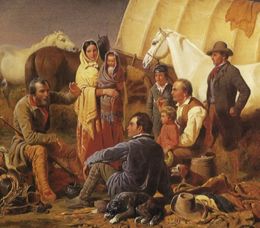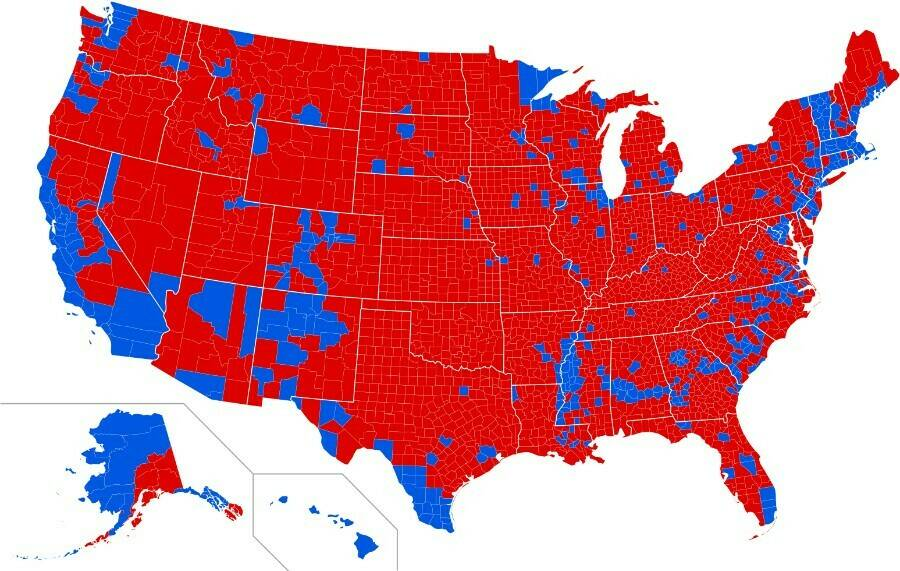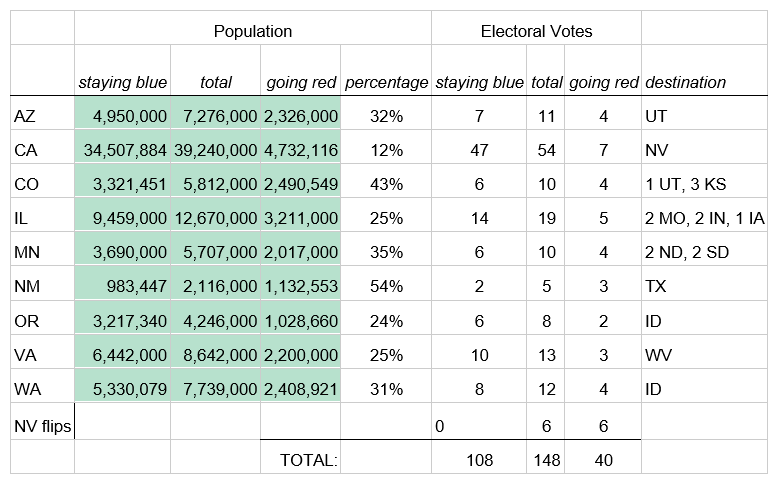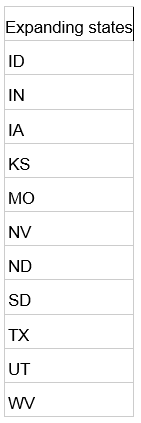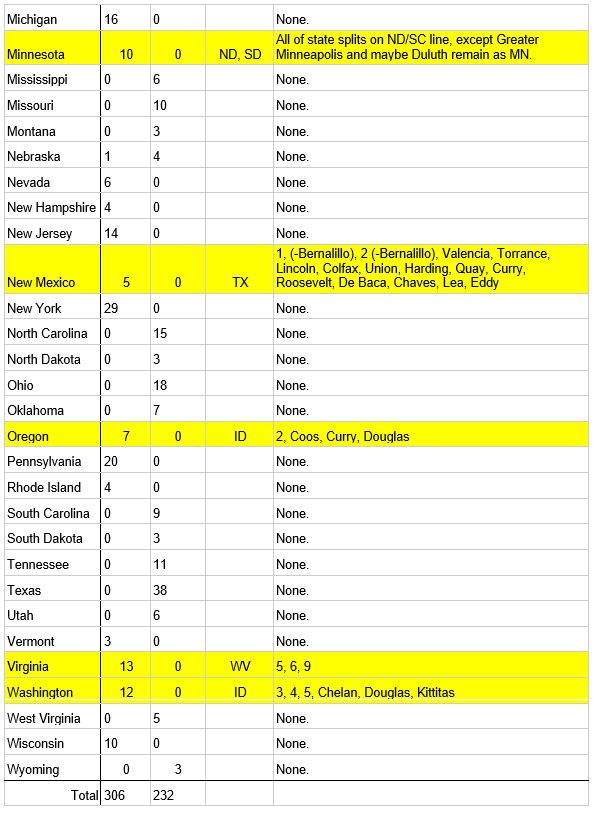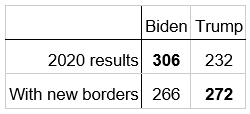Parting Ways
Posted By Cade Riddick On In North American New Right | Comments DisabledNational divorce is the natural consequence of America’s highly politicized culture. Cable news channels routinely feature the term “civil war.” Average Americans divide along political lines in their personal and social lives, and nowhere is this more pronounced than on college campuses. America’s internal divisions are here to stay.
No one uses the term “civil war” in the 1860s sense, but it carries emotional weight nevertheless. Americans feel a sense of being divided amongst themselves everywhere they go. Even in settings such as the grocery store, people wait for a cue to know if they are free to speak openly or if they are in mixed company. Thus, political separation is common even on the interpersonal level.
Cultural changes take time before developing into a political result. The cultural concept of divorce was taboo before the Second World War, and now the concept of political divorce has reached maturity. What are some ways in which this process can begin?
Political divorce within the United States does not require something like what occurred in 1861. No one needs to convince their state legislature that they need to risk any kind of military conflict. The United States has natural jurisdictions with manageable potential transitions that could be wildly popular with all of those who are directly affected.
The US is long overdue for the redrawing of state borders. It is time to change the shape of some states. The last time a state line moved was in 1961, when flooding created a bend in the Mississippi River that cut off 20 acres from Minnesota. It was then ceded to North Dakota. That was before the civil rights era and before being divorced was a socially acceptable marital status. In other words, the times have changed.
Divorce can be a good thing. Sometimes a marriage becomes so toxic that both individuals are fated to unhappiness, frustration, failure, and occasionally, tragedy. If there is something to be learned by the experience of divorcees, perhaps it is how to avoid nasty pitfalls.
The successful divorce is one in which the parents become co-parents: no huge public blow-ups, no social media flame outs, no violence. This can be applied in politics on the local level.
In 1995, the Canadian Supreme Court ruled that Quebec had the right to declare its independence. That ruling was made on the condition that there would be no military conflict; it would be a peaceful separation. Citizens from Ontario and Montreal would still remain neighbors. Quebec would take its seat at NATO and the United Nations, and life would go on. Sadly, in spite of our what we might have imagined, the vote failed by 1.16%.
How would this look in the United States? There have been many abortive modern grassroots independence movements for states, including in Vermont, Hawaii, Texas, California, the South, and countless smaller localities. The greatest of these has been the ongoing duel with secession movements in California, which are both Left- and Right-leaning.
The Calexit Example
Multiple versions of Calexit have been proposed. In the 1990s, an obscure movement arose for the formation of a new state: Jefferson. Jefferson was to encompass most of northern California and southern Oregon. It drew on the legacy of Thomas Jefferson’s anti-federalist philosophy. Jefferson was commitment to states’ rights, as was exemplified by his election to the presidency in 1800. The modern-day Jefferson Project was a movement of rural Reaganite conservatives who eschewed San Francisco and Hollywood’s liberalism.
As California became solidly blue, a new Calexit movement arose during the Obama and Trump years. California towers in its representation in Congress and in its number of electoral votes. More Californians voted for Trump than in any other state, but due to California’s population, it is nevertheless impregnably blue. This makes California the ideal starting point for some sort of secession compromise.
 [2]
[2]You can buy Greg Johnson’s The Year America Died here. [3]
The Calexit movement was mostly an aggressive Leftist push to gain representation in the US Senate at a time when Republicans held a narrow majority. Every state has two senators. For Wyoming, this translates into one Senator for every 290,538 citizens. For California, this means one for every 19,806,747 citizens. Ergo, Wyoming has more than 68 times the representation in the US Senate as California, and this number grows with every day.
The Calexit movement sought to create three states: one for San Francisco, encompassing all of northern California; one for Los Angeles and the central California coast; and one for San Diego along with southern and southeastern California. It made sense: three major metropolitan geopolitical regions and their outlying areas. The Calexit movement’s goal was ardently opposed by Republicans, who saw it as an attempt to add four more Democratic seats to the US Senate.
The inclinations of both Right-wing and Left-wing extremists are all, on some levels, both correct and in agreement. They want separation. They are neighbors, trapped within the same state, and stuck in a cycle of dysfunction and toxic hatred for each other. What they need is room to breathe. The Parting Ways concept as outlined below is a methodology that recognizes and aligns with current irreversible trends while taking advantage of established political systems and cultural communities.
Changing the Shapes of States
There are many sub-groupings that are already politically unified that could merely switch from one side of a state border to the other. The expenses of this system-wide could be easily deferred and reorganized with a cost so small that the current political system could lumber on peacefully for many decades, if not a century, afterwards without the types of outward divisions that America has suffered since the rise of identity politics.
Congressional districts are the largest politically-organized blocs within states. After that, counties are the second-largest. In some scenarios, it makes sense that a Congressional district could simply move into the state that it borders. In other areas, counties are isolated from a deeply urban center that rules over them from a geographical extremity within their Congressional district. Another, similar situation is when an urban area essentially rules over an entire state and thus builds great resentment among its rural citizenry.
This concept of mid-level secessions by Congressional districts, counties, and possibly other types of clear-cut cultural/political communities is a win-win solution for all parties involved. The end result would likely be the passing of state laws that differ more and more from state to state. A kind of sectionalism could eventually arise not unlike what was brewing in 1850 — but the Missouri Compromise of 1820 bought us 40 years of peace. Surely, a small compromise such as changing the shapes of a handful of states could buy us time once again.
The lack of culturally-based state borders, especially in the West, is obvious even to an elementary-school age child when they look at a map. Western states were drawn on a grid before civilization had arrived. Today they mean something, however. They remain rural, but there are cohesive communities that did not exist when lines were merely drawn on a map. State boundaries were traditionally agreed upon based on a political plan for a community’s future. The technological era is more flexible given that state borders shift and change on a routine basis. These communities can and should have the polity they deserve.
Blue states would become bluer, and red states would become redder. The easy solution is that red congressional districts and counties that border red states but are in blue states could secede and join their neighboring. The remaining minority Republicans left in blue states might be more and more willing to seek compromise as they come to no longer see gridlock and filibuster-type strategies as viable holdout positions, leading toward a futile hope for final victory. For example, Republicans in Massachusetts may begin to resemble their Democratic neighbors rather than looking to the Bible Belt for leadership. This is a kind of real-life local community connection that has not been reflected since the onset of identity politics in 2016.
Starting Point: California
One could easily look at Congressional party identification by district office-holders, but the low-hanging fruit, as it were, is more easily identified by voting results in the 2020 Presidential Election. In other words, a Congressional district won by a Republican is less likely to storm the temple of democracy than one from the backcountry hinterlands where Trump runs up the score on Election Day. So let’s start there.
Trump handily carried California’s Congressional districts 1, 3, 5, 20, and 23. Together, these regions make a natural cultural and geographic analog to Nevada. If they held a referendum on seceding from California and joining Nevada, it would likely carry by a wide margin given that Nevada is likewise an amalgamation of libertarian and Wild West culture.
Although Kings County and Kern County were in Congressional districts carried by Biden, they voted in a landslide for Trump in 2020. They share a rural cowboy culture that is similar to the aforementioned five bordering California Congressional districts. These counties should join with their geo-cultural neighbors and imagine a union with Nevada.
Let the people control their own destiny. Allowing geo-cultural groups to decide their own futures would improve emotional-cultural health and happiness. As it stands, these large regions in California hold deep resentment toward the coastal elites, whom they see as degenerate, corrupt, and utterly weird.
The Electoral College scorecard can frame this concept of secession. In that regard, this exodus of 4.73 million citizens and their lands from California to Nevada would bring along seven electoral college delegates. Additionally, it would easily flip Nevada from purple to red. Donald Trump’s donors would do well to keep a scorecard:
California: +7 to Nevada
Nevada +6
Nevada is the most hospitable environment of any purple state for a red wave of new citizens. They are already experiencing growth from California Republican population flight. This move could simplify that shift in big ways. People can secede and move without actually moving. After all, Nevada is more interested in pure economics than defending the type of political establishment that inhabits the capitals of other states.
Washington and Oregon
A trend similar to California’s exists in greater extremes in the Pacific Northwest. It is no secret that Portland is the tail that wags the dog in Oregon, and so is Seattle for Washington. Throngs of ruralites in Washington state would erupt with glee over the notion of joining Idaho. This encompasses Washington Congressional districts 3, 4, and 5. By any geo-cultural standards, Chelan County, Kittatas County, and Douglas County would also fall into this grouping.
In Oregon, the divide falls along the lines of Congressional district 2 and includes Coos County, Curry County, and Douglas County. So, electioneers, start keeping your scorecard. Here are the Electoral College delegates moving to red states:
Washington: +4 to Idaho
Oregon: +2 to Idaho
Arizona
By the standards outlined above, Arizona’s natural geopolitical boundaries could shrink to all but greater Phoenix, Pima County, and Santa Cruz County. More miles of Arizona’s border push up against Utah than any other state. They could petition to join it. This is more culturally and geographically consistent than their other neighbors to the west: California and Nevada. Northern Arizona is already known for its role as a haven for fleeing religious sectarian Utahns.
Some eastern Arizona counties may feel closer ties to New Mexico, however. Staying with their Utah-leaning neighbors to the north could prove easier than trying to split New Mexico as it presently exists in three directions. Besides, New Mexico has its own issues, and they lean toward Texas.
Arizona: +4 to Utah
New Mexico
New Mexico is the most absurdly Democrat-gerrymandered state of all. They have three Congressional districts. All of them are in Albuquerque, and are then split like three pieces of a pie to make sure Democrats hold all three.
 [4]
[4]You can buy Greg Hood’s Waking Up From the American Dream here. [5]
The remedy is simple. All of Congressional districts 1 and 2, except for their Bernalillo County extremities (aka Albuquerque), would vote in landslides to support a Trump-style platform. New Mexico’s second Congressional district mostly splits down the center, with the eastern and southern counties in the deepest agreement. This includes Colfax County, Chaves County, Curry County, De Baca County, Eddy County, Harding County, Lea County, Lincoln County, Quay County, Roosevelt County, Torrance County, Union County, and Valencia County.
Their obvious destination is Texas. Cultural and historical communities in these parts of New Mexico almost invariably have direct ties to Texas. Every metric of cultural aesthetics tracks along the same Texas-centric path.
New Mexico: +3 to Texas
Colorado
Colorado follows a similar pattern as New Mexico, with Denver as its island of dense population and Democratic politics. For Colorado, it is as simple as moving their third Congressional district to Utah, and their eastern plains region — Congressional districts 4 and 5 — to Kansas. Any fair assessment of their geo-cultural communities will bear this out as commonsensical for these regions.
Colorado: +3 to Kansas, +1 to Utah
Minnesota
Minnesotans are already deeply conscious of the fact that Minneapolis and maybe Duluth are one thing, and that the rest of the state are like North and South Dakota. It would be easy to simply extend the state line separating North Dakota from South Dakota in an eastward direction until it butts up against the greater Minneapolis area.
While rural Minnesotans are a bit more attached to their identity as Minnesotans per se, they invariably detest the new urbanites in the east and would feel a patriotic sense of accomplishment by joining their allies to the west. This scenario is perhaps the most culturally beautiful when it comes to potentially re-identifying a culture. In other words, of all of these divorces rural Minnesotans are the matchmaker’s dream for a midlife re-pairing with the lonely and longing Dakotas, who might have otherwise ended up as old maids. It seems like an unlikely match that would be perfect in the books. The vote might be less than a landslide, but it could end up feeling like a destiny that was written in the stars.
Minnesota: +2 to North Dakota, +2 to South Dakota
Illinois
Illinois is the most cobbled-together smorgasbord of all states. Like Switzerland, the people of Illinois speak four languages, only theirs are languages of the heart. Rockford and the northwest corner might as well be Iowa, while the southwestern portion of the state falls into St. Louis’ orbit. The eastern half of the state identifies as Indiana. Caught directly in the crossroads of all of that is Peoria, which is the existential counterbalance of all three regions in opposition to greater Chicago.
The greater Chicago area makes up roughly three-quarters of Illinois’ population. The remainder of the state could be split three ways, into their respective alter egos. Of all of the secessions and petitions to join new states described in this article, this one is the most unclear. Yet, it is also the most obvious in that none of the rest of Illinois is happy with their sinister northeastern Goliath.
Illinois: +2 to Missouri, +2 to Indiana, +1 to Iowa
Virginia
Most of the original Thirteen Colonies and the other East Coast states are harmonious in their current alignments. There is an old North-South divide, but it maintains a familiar balance that has no outliers who are looking for new identities other than what has existed in the past. In other words, the East Coast is settled and established, with one exception: western Virginia.
 [6]
[6]You can buy Greg Johnson’s Toward a New Nationalism here [7]
It is no secret that Nova, or northern Virginia, is a complete cultural outlier that is closer to Washington, DC in economics, cultural diversity, and everything else that defines it as a region. Conversely, southeastern Virginia has spent the last 100 years becoming a transient military barracks. While that is an exaggeration, I am originally from Norfolk and can personally vouch for the truth of it. The Richmond corridor to DC has been a modern experiment in affirmative action via municipal politics ever since Mayor Douglas Wilder became the first African-American Governor.
Eastern and western Virginia have never been more different. Meanwhile, West Virginia has remained as a virtual identical twin, separated at birth, from western Virginia. The geo-cultural lines are roughly accurate as drawn by Virginia Congressional districts 5, 6, and 9. This encompasses southwest Virginia, which is often referred to as a remote mountain country of its own, but is in every way identical to West Virginia’s southern half.
The other two regions are a bit more difficult to explain, but they hold true. The Shenandoah Valley is where West Virginia begins. This is true in every way, both historically and culturally. Stray DC tourists find their way to the Valley every summer, but they go to West Virginia for all of the same reasons. The Shenandoah Valley has a lot to offer West Virginia, and West Virginia has a lot to offer the Shenandoah Valley.
Virginia’s south-central region represents an older era in Virginia’s history, but it remains a foothills culture that is the historical homeland of the bluegrass music that has come to typify West Virginian identity. The right word is simpatico. Like so many of the examples above, south-central Virginia could be like the man caught in a deeply toxic marriage, but who finally lands in the arms of his long-lost high school sweetheart. It’s time.
Virginia: +3 to West Virginia
Conclusion
The secession scoreboard tallies a total of 40 Electoral College delegates going to red states. How is this not already in the Republican Party playbook? This position is the natural outcome of the new Republican Party that was shaped by Donald Trump’s victory in 2016. The neocons’ national coalition is over. It’s so over, and the Republican Party can be so back. Will they have the courage to try something totally new?
Donald Trump was something completely new in 2016. Perhaps the only way Trump can pick up substantial Electoral College gains is by pushing grassroots fundamentals past the limits of their outdated and dying geopolitical boundaries. If given a democratic voice, every one of these regions would exalt in jubilation over an opportunity to unite with their ideological, cultural, and biological kin.
Referendums are not always binding, but each of these locales can put secession on their ballots, and specify where they intend to petition in order to join a neighboring state. These would be mostly landslide elections that could hold popular mandates for generations yet unborn. Finding new Electoral College votes is hard to come by. This strategy could unleash a new wave of Republican excitement and optimism.
As things stand, the 2016 coalition is gone. The 2024 Republican nominee for President will have to hold Florida (30 electoral votes), which seems likely given that Trump widened his margin there from 1.2 to 3.4% in 2020. North Carolina (16 electoral votes) slipped from a 3.66% lead to only 1.8%, but igniting a secession-themed campaign could draw out a Tar Heel base that stayed home in 2020. In fact, Georgia (16 electoral votes), another state beleaguered by Confederate flag and monument controversies, might also find new life with secession on the ballot, even if it is not their own secession. They could finally witness it firsthand as the spotlight turns to the rural Northern Trump voter who has already adopted the Confederate flag as his symbol of resistance to tyranny.
A secession campaign would be wildly popular in Texas (40 electoral votes), which is now a battleground state and has recently introduced the concept of national secession via state legislation. No other red states are in danger of losing to a Democratic nominee for President. The purple states of Wisconsin (10), Pennsylvania (19), and Michigan (15) are still in play. A bold move toward redefining America could be enough to energize and tip their balance into the red. Trump’s 2020 campaign felt stale, like every other neocon campaign of the last 35 years. Boring. Trump breathed life into the ruralites in 2016 with his metaphor about building a wall. 2020, by contrast, was a flop, whether Democrats cheated more than usual or not.
For a man who has disposed of more women — probably even cheating women — than his average supporter has ever attained, Trump might be exactly the avatar Americans need to carry us through a national divorce. If Trump is serious about running in 2024, he will have to finish what he started. He opened the door for a new American Right. It’s time to swing it open wide and let the heartland come charging in behind him.
2020 Electoral College Results
Biden: 306 Trump: 232
* * *
Like all journals of dissident ideas, Counter-Currents depends on the support of readers like you. Help us compete with the censors of the Left and the violent accelerationists of the Right with a donation today. (The easiest way to help is with an e-check donation. All you need is your checkbook.)
For other ways to donate, click here [18].
